Shahriar Badsha
BRNES: Enabling Security and Privacy-aware Experience Sharing in Multiagent Robotic and Autonomous Systems
Aug 02, 2023



Abstract:Although experience sharing (ES) accelerates multiagent reinforcement learning (MARL) in an advisor-advisee framework, attempts to apply ES to decentralized multiagent systems have so far relied on trusted environments and overlooked the possibility of adversarial manipulation and inference. Nevertheless, in a real-world setting, some Byzantine attackers, disguised as advisors, may provide false advice to the advisee and catastrophically degrade the overall learning performance. Also, an inference attacker, disguised as an advisee, may conduct several queries to infer the advisors' private information and make the entire ES process questionable in terms of privacy leakage. To address and tackle these issues, we propose a novel MARL framework (BRNES) that heuristically selects a dynamic neighbor zone for each advisee at each learning step and adopts a weighted experience aggregation technique to reduce Byzantine attack impact. Furthermore, to keep the agent's private information safe from adversarial inference attacks, we leverage the local differential privacy (LDP)-induced noise during the ES process. Our experiments show that our framework outperforms the state-of-the-art in terms of the steps to goal, obtained reward, and time to goal metrics. Particularly, our evaluation shows that the proposed framework is 8.32x faster than the current non-private frameworks and 1.41x faster than the private frameworks in an adversarial setting.
Cybersecurity Information Exchange with Privacy (CYBEX-P) and TAHOE -- A Cyberthreat Language
Jun 03, 2021
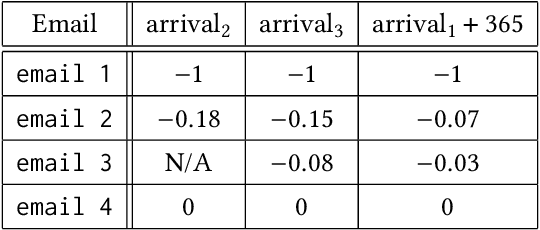
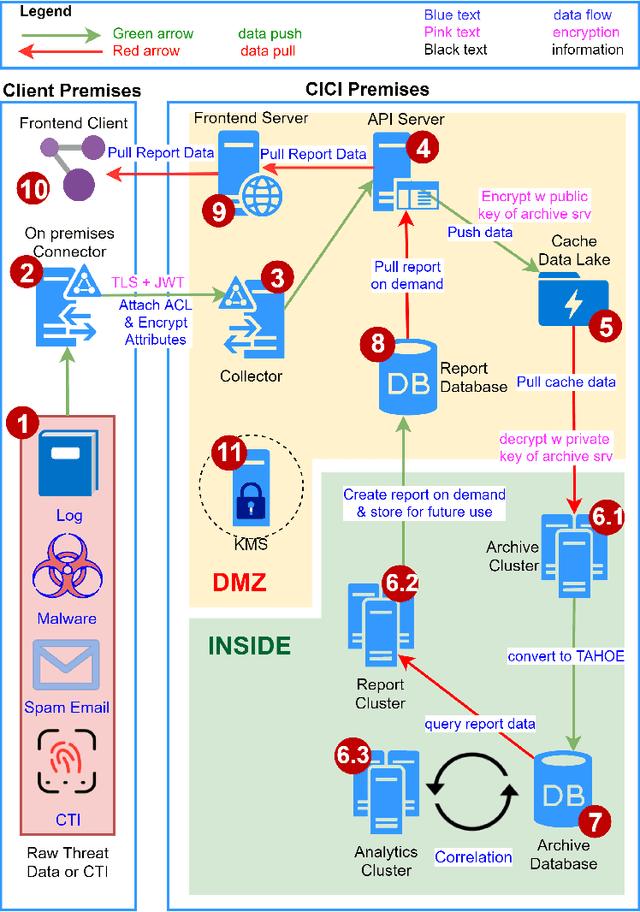

Abstract:Cybersecurity information sharing (CIS) is envisioned to protect organizations more effectively from advanced cyber attacks. However, a completely automated CIS platform is not widely adopted. The major challenges are: (1) the absence of a robust cyber threat language (CTL) and (2) the concerns over data privacy. This work introduces Cybersecurity Information Exchangewith Privacy (CYBEX-P), as a CIS framework, to tackle these challenges. CYBEX-P allows organizations to share heterogeneous data with granular, attribute based privacy control. It correlates the data to automatically generate intuitive reports and defensive rules. To achieve such versatility, we have developed TAHOE - a graph based CTL. TAHOE is a structure for storing,sharing and analyzing threat data. It also intrinsically correlates the data. We have further developed a universal Threat Data Query Language (TDQL). In this paper, we propose the system architecture for CYBEX-P. We then discuss its scalability and privacy features along with a use case of CYBEX-P providing Infrastructure as a Service (IaaS). We further introduce TAHOE& TDQL as better alternatives to existing CTLs and formulate ThreatRank - an algorithm to detect new malicious even
A Non-Blind Watermarking Scheme for Gray Scale Images in Discrete Wavelet Transform Domain using Two Subbands
Nov 12, 2012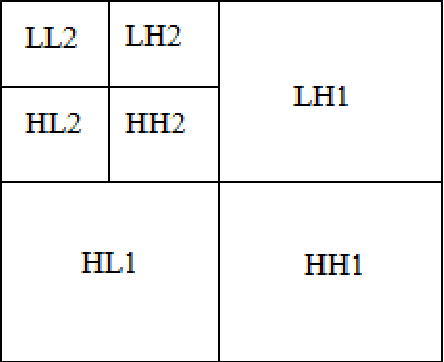
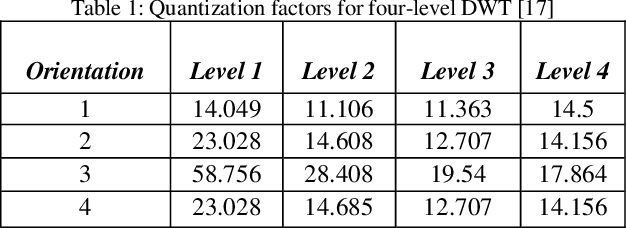
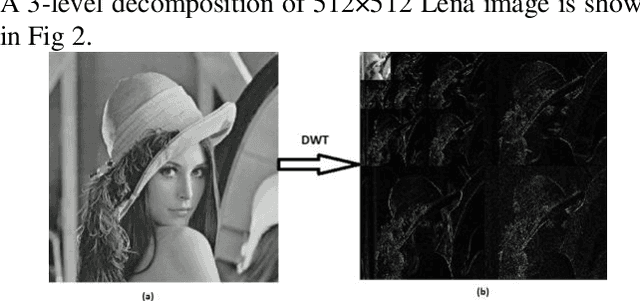

Abstract:Digital watermarking is the process to hide digital pattern directly into a digital content. Digital watermarking techniques are used to address digital rights management, protect information and conceal secrets. An invisible non-blind watermarking approach for gray scale images is proposed in this paper. The host image is decomposed into 3-levels using Discrete Wavelet Transform. Based on the parent-child relationship between the wavelet coefficients the Set Partitioning in Hierarchical Trees (SPIHT) compression algorithm is performed on the LH3, LH2, HL3 and HL2 subbands to find out the significant coefficients. The most significant coefficients of LH2 and HL2 bands are selected to embed a binary watermark image. The selected significant coefficients are modulated using Noise Visibility Function, which is considered as the best strength to ensure better imperceptibility. The approach is tested against various image processing attacks such as addition of noise, filtering, cropping, JPEG compression, histogram equalization and contrast adjustment. The experimental results reveal the high effectiveness of the method.
* 9 pages, 7 figures
 Add to Chrome
Add to Chrome Add to Firefox
Add to Firefox Add to Edge
Add to Edge